Feeding ecology and habitat use of the reef manta ray (Mobula alfredi) in the Chagos Marine Protected Area, Indian Ocean revealed using stable isotope analysis
2022
Genevieve Alexander (MRes Applied Marine Science - University of Plymouth)
Keywords: Mobula alfredi • Stable Isotope Analysis • Feeding Ecology • Habitat Use • Chagos MPA
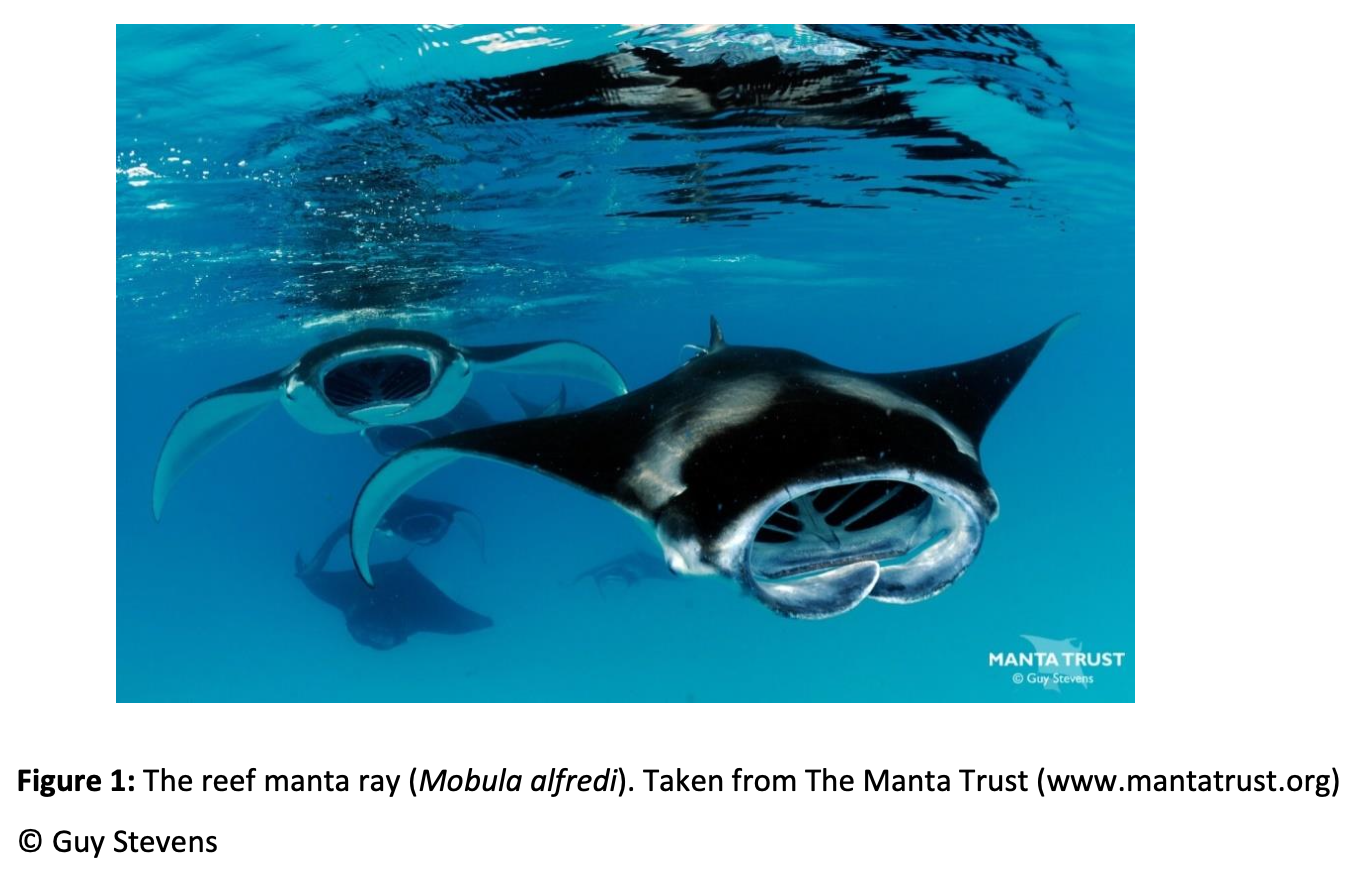
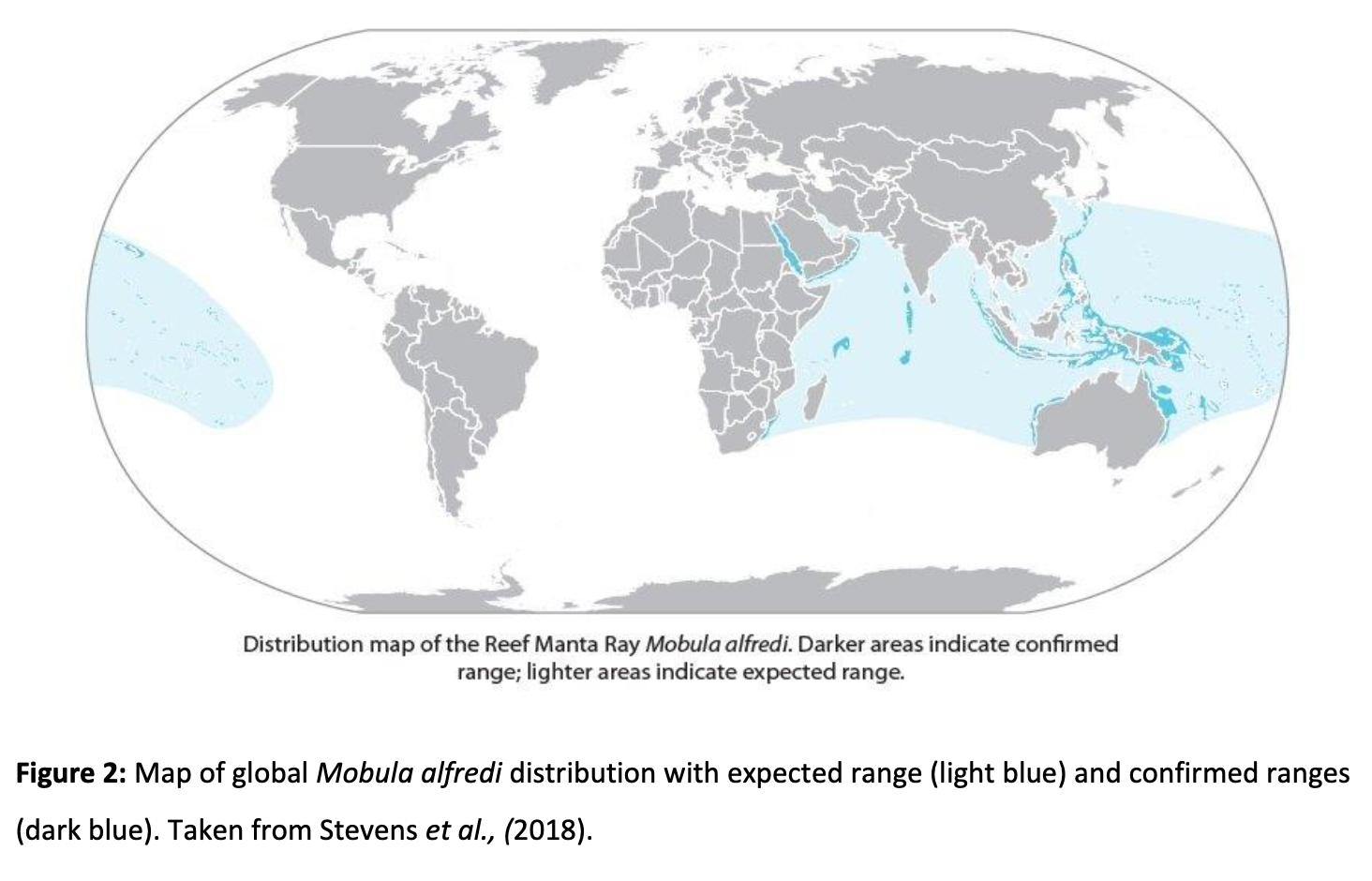
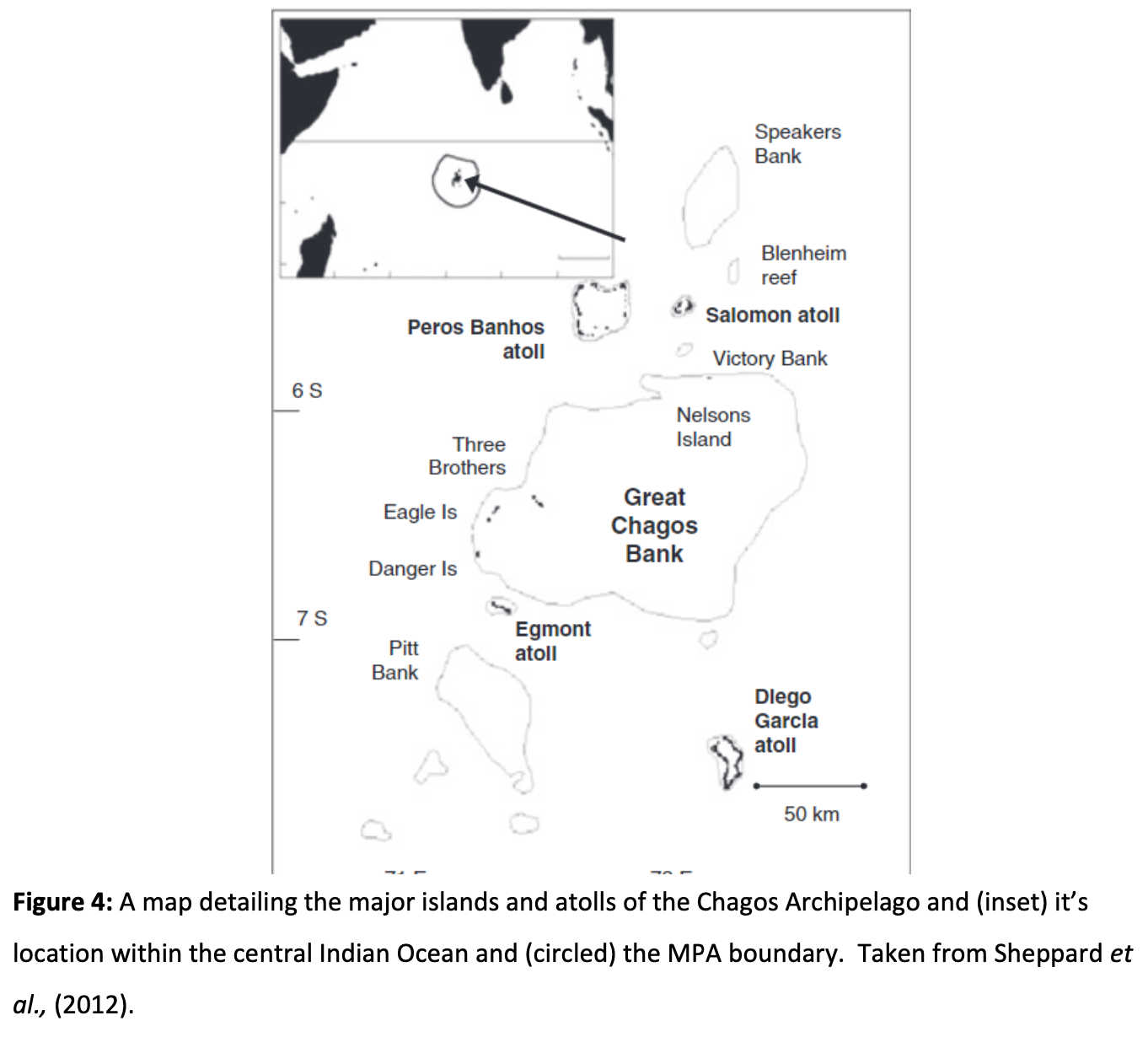
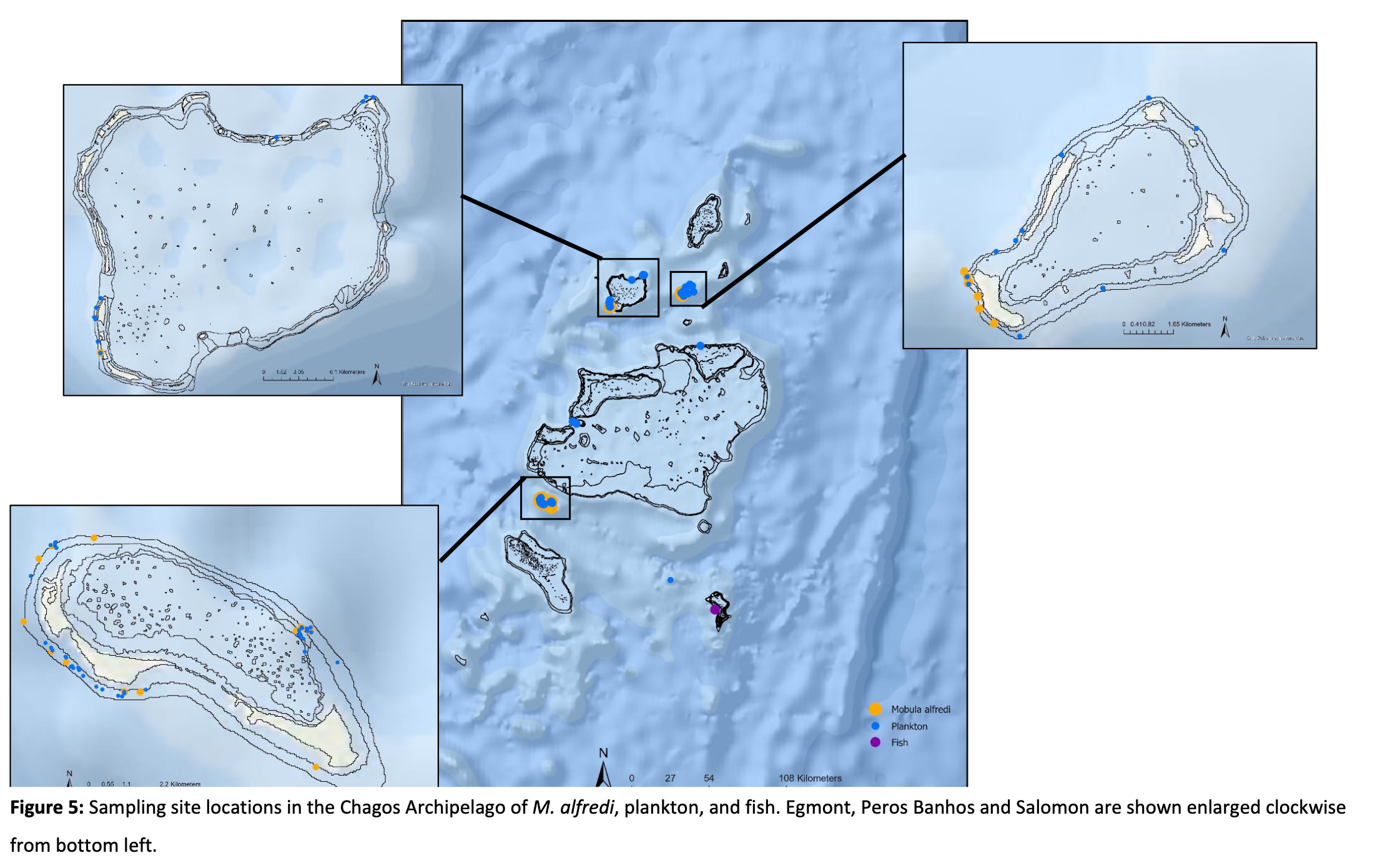
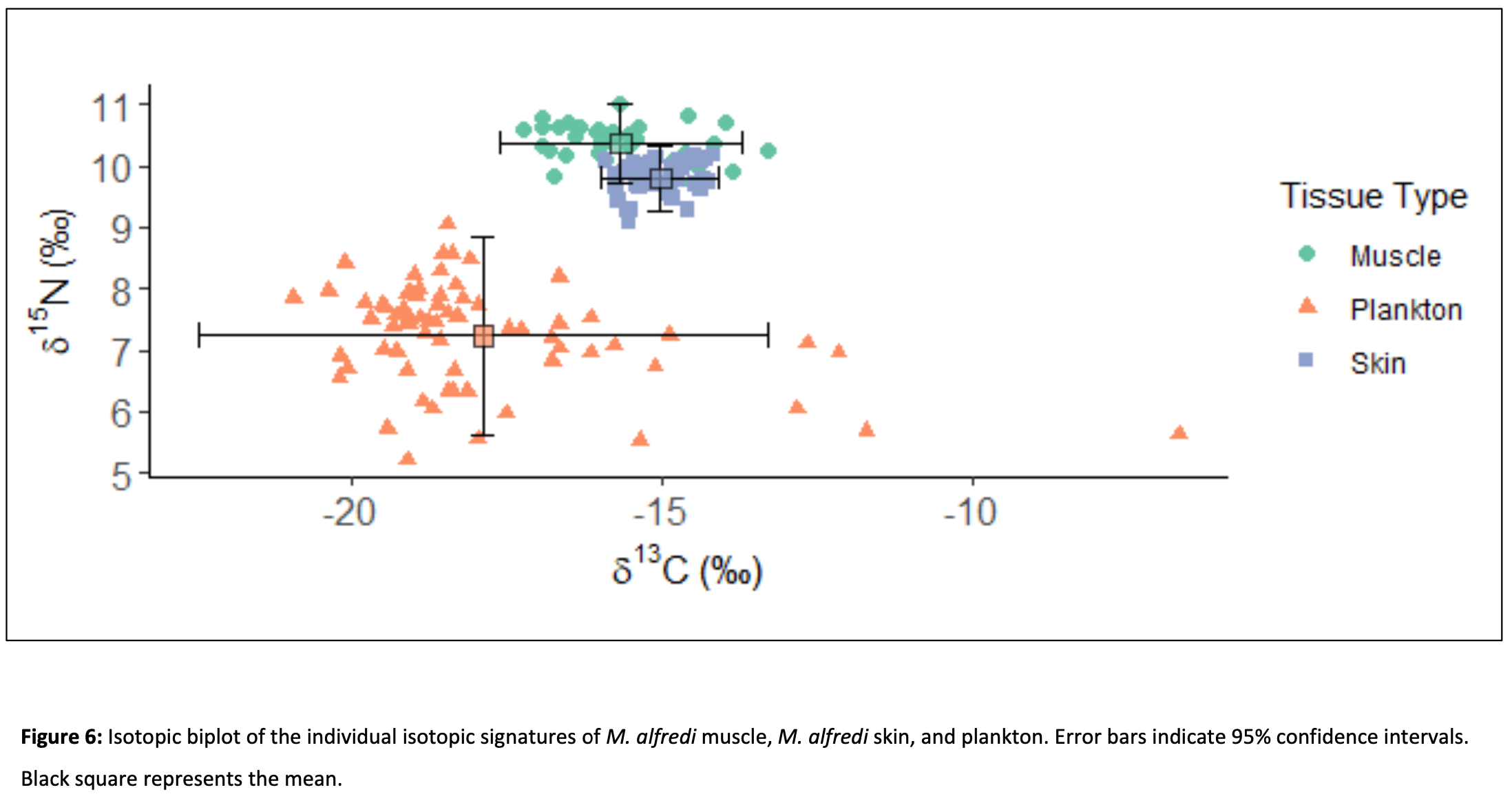
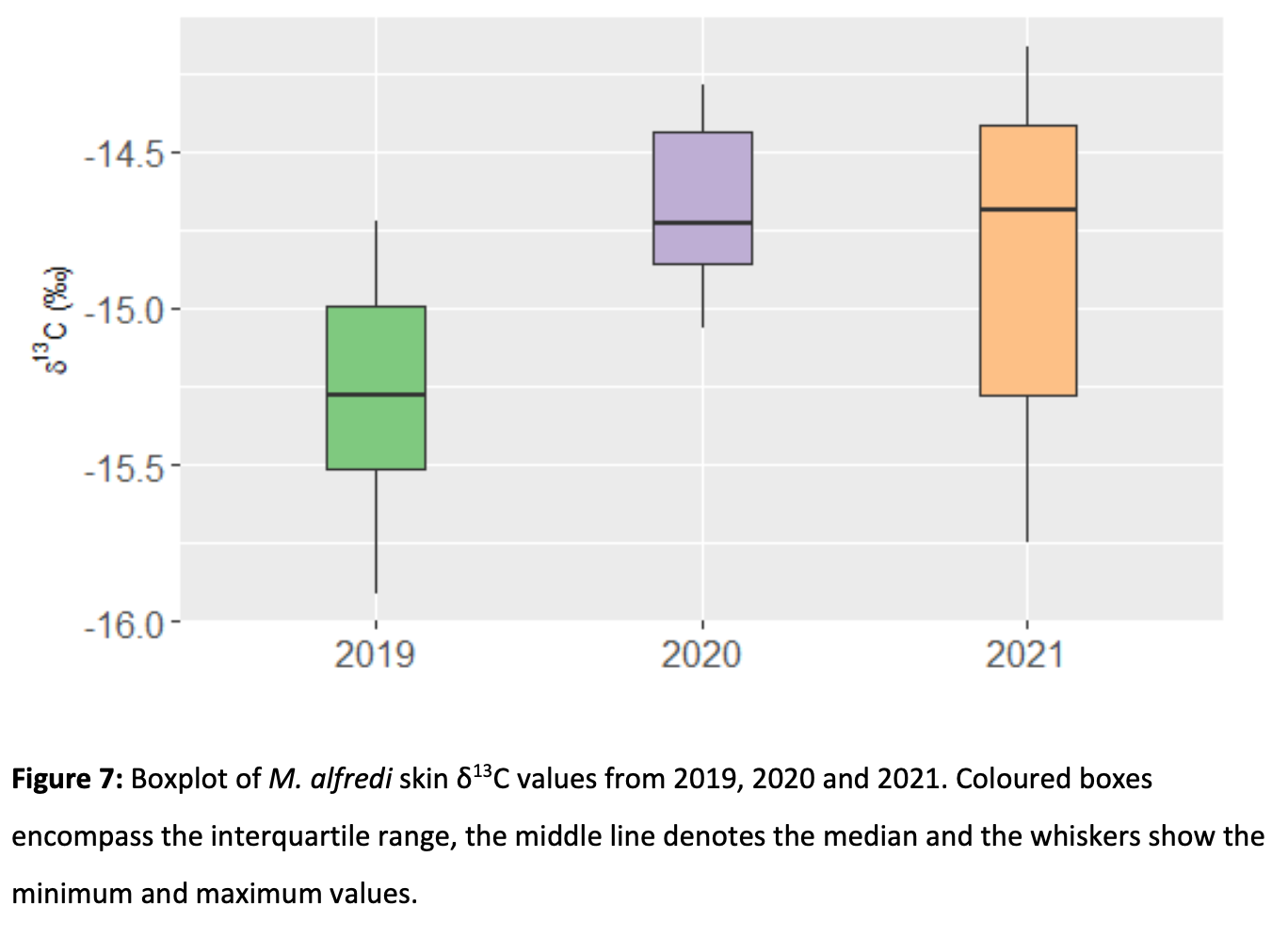
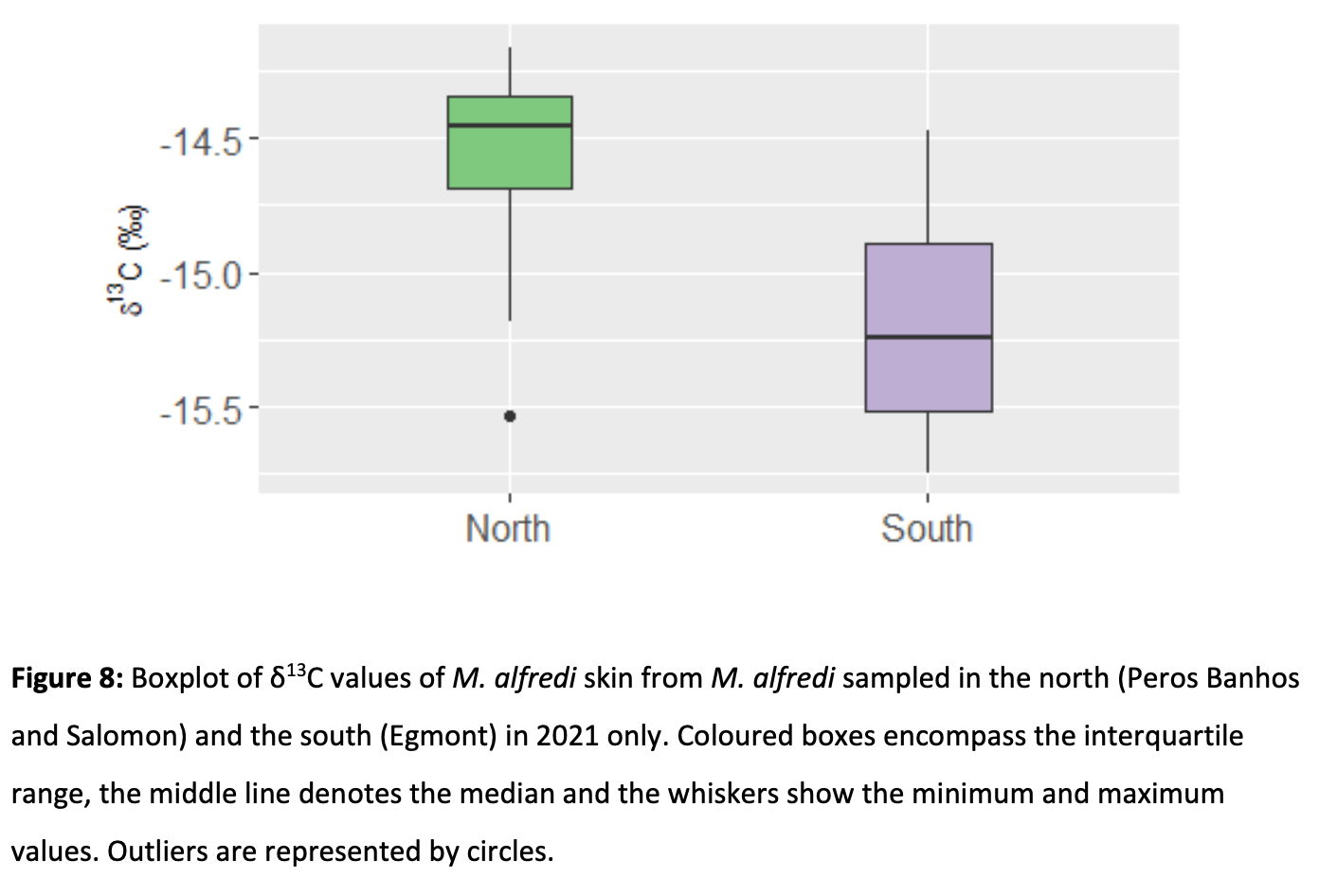
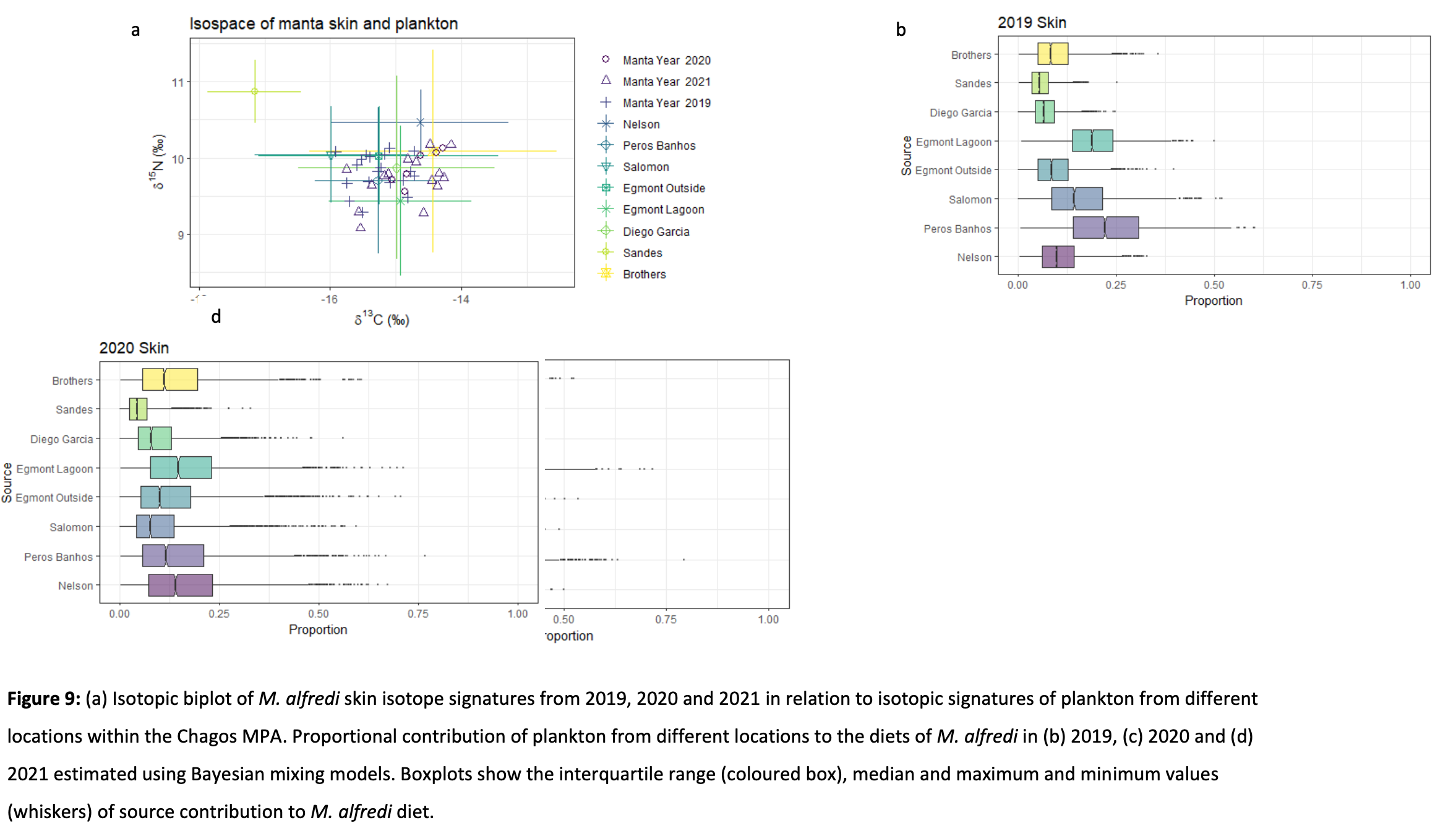
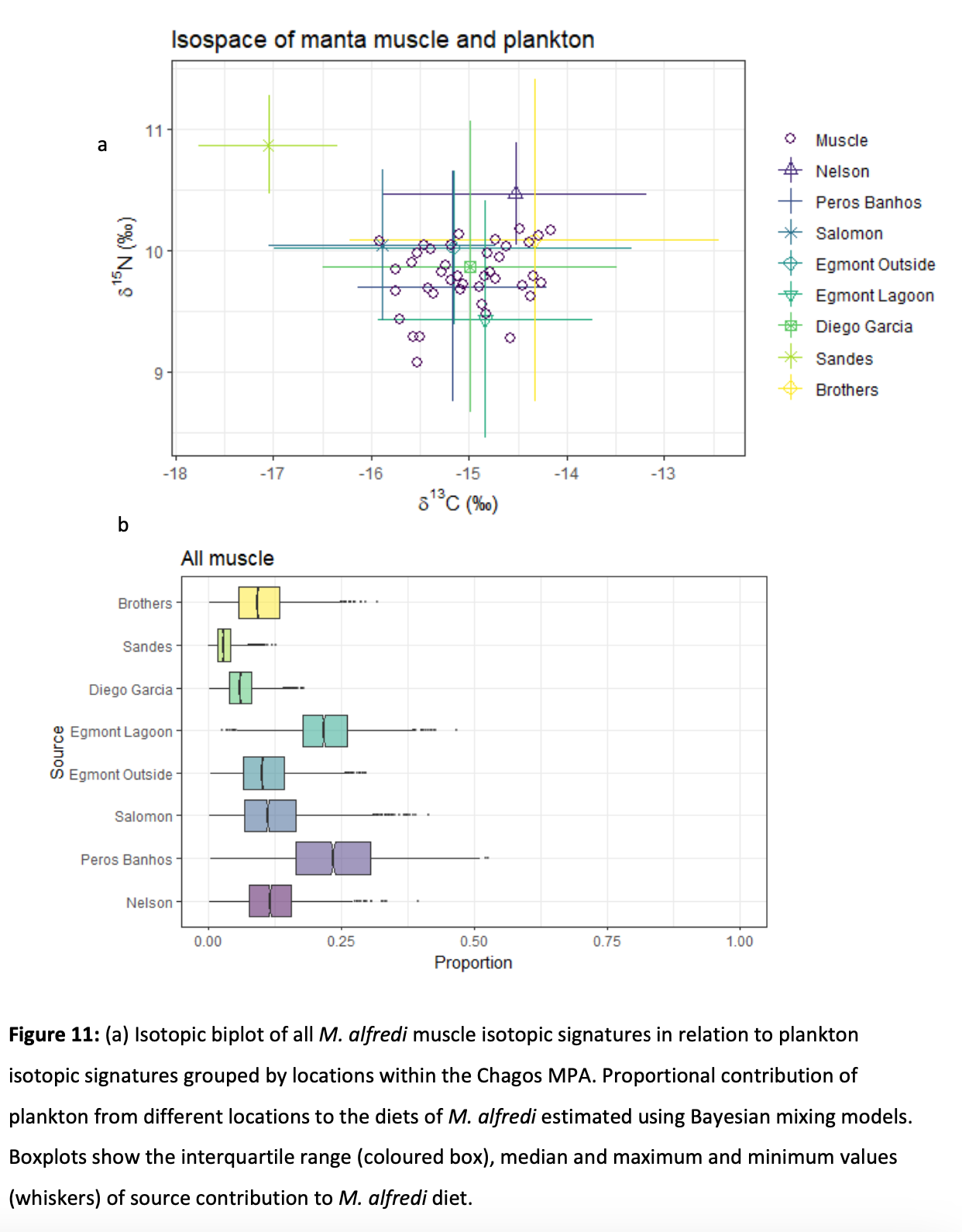
Summary: The study focuses on reef manta rays (Mobula alfredi) in the Chagos Archipelago's Marine Protected Area (MPA). Stable isotope analysis of muscle and skin tissue was used to investigate their feeding ecology and habitat use. Variation in foraging locations was observed in response to environmental events. Two potential foraging hotspots, Egmont Lagoon and Peros Banhos, were identified. Understanding habitat use is crucial for effective conservation, especially to minimise illegal fishing threats to this threatened species.
Abstract
“Effective conservation of threatened species relies on identification of key habitats, such as those used for foraging. The reef manta ray (Mobula alfredi) is a threatened species of planktivorous elasmobranch in rapid global decline due to targeted fishing and incidental bycatch. A local population of M. alfredi reside in the Chagos Archipelago, central Indian Ocean. The archipelago is encompassed by a 640,000 km2 no-take Marine Protected Area (MPA), however Illegal, Unreported and Unregulated (IUU) fishing remains a prevalent issue and continue to target elasmobranchs as a high value catch. Here, we use stable isotope analysis of δ13C and δ15N of M. alfredi muscle and skin tissue to investigate the feeding ecology and habitat use of this local population within the MPA. 70 bulk plankton samples and 41 M. alfredi tissue biopsies were collected from various locations within the MPA and analysed to calculate their isotopic signatures of δ13C and δ15N. Isotopic values of δ13C of M. alfredi skin displayed a depletion of δ13C in 2019, suggesting a variation in foraging location which coincides with the extreme positive Indian Ocean Dipole event and fluctuating plankton availability. Bayesian mixing models estimate Egmont Lagoon and Peros Banhos as likely foraging hotspots (20-25% of diet input) for both skin and muscle tissue, suggesting that M. alfredi feed in these locations on a seasonal and annual basis. Peros Banhos is an atoll with relatively few M. alfredi sightings and the possibility of Peros Banhos as a foraging hotspot provides reason for increased survey effort in this area of the region. Isotopic signatures of δ13C and δ15N are significantly different between muscle and skin, indicating a difference in short-term and long-term feeding ecology and habitat use. An improved knowledge of M. alfredi habitat use within the MPA is vital to optimise enforcement patrols of illegal fishing vessels to minimise M. alfredi catch.”
Author Affiliations
University of Plymouth
The Manta Trust
